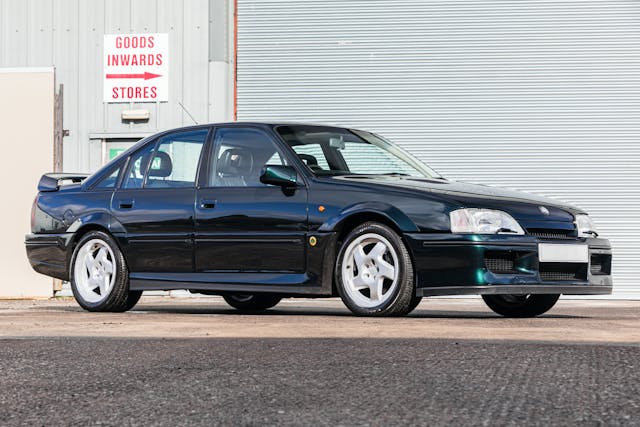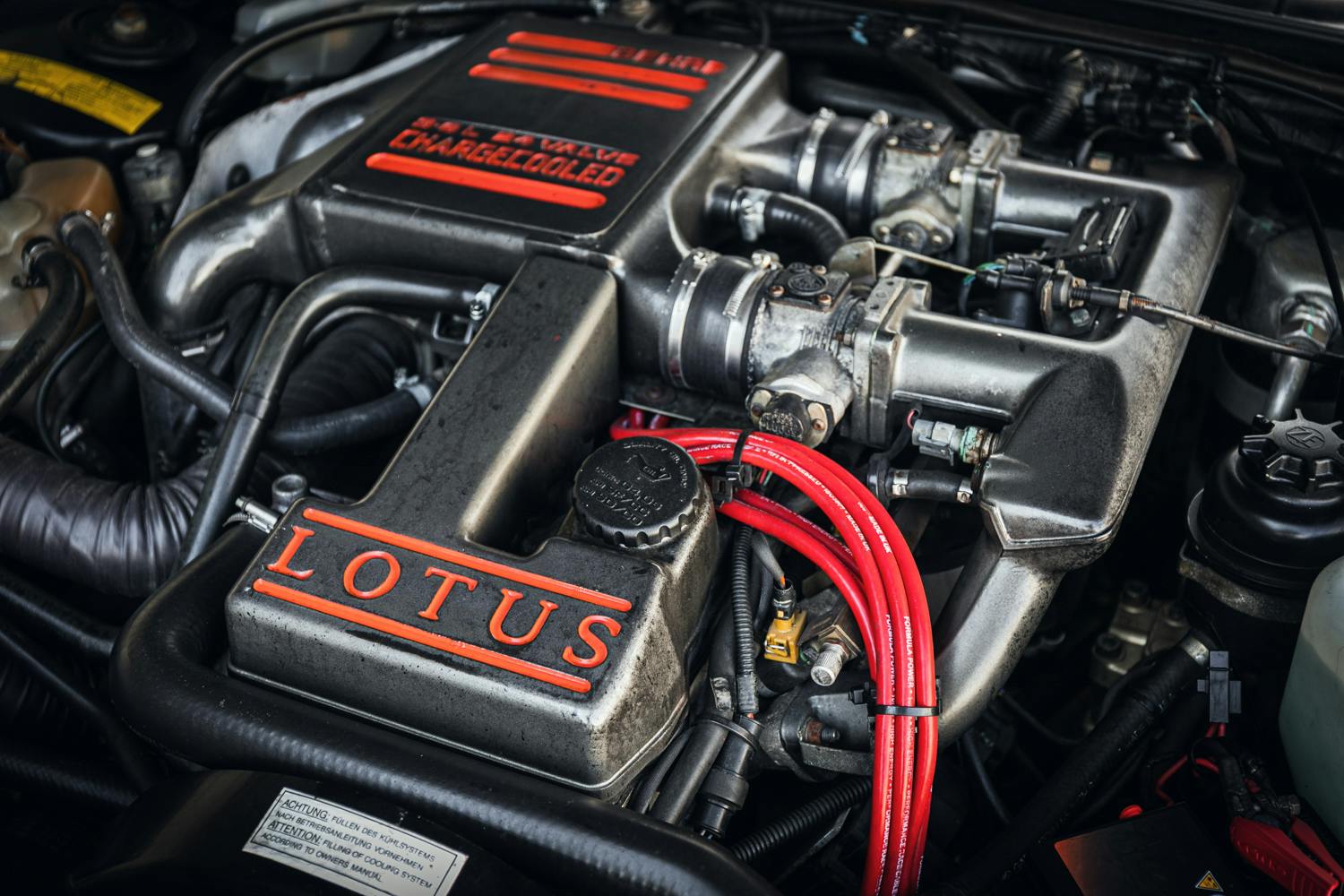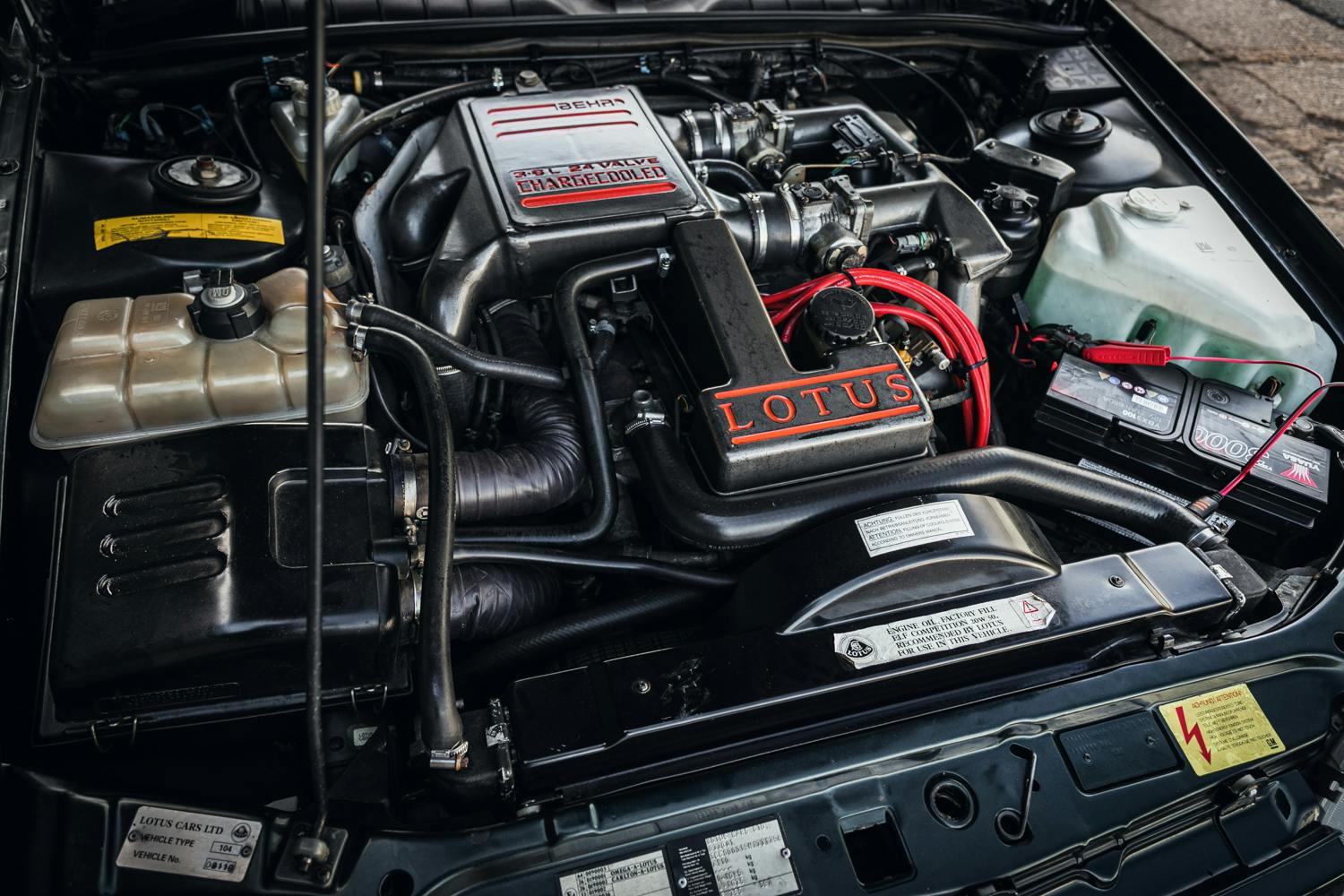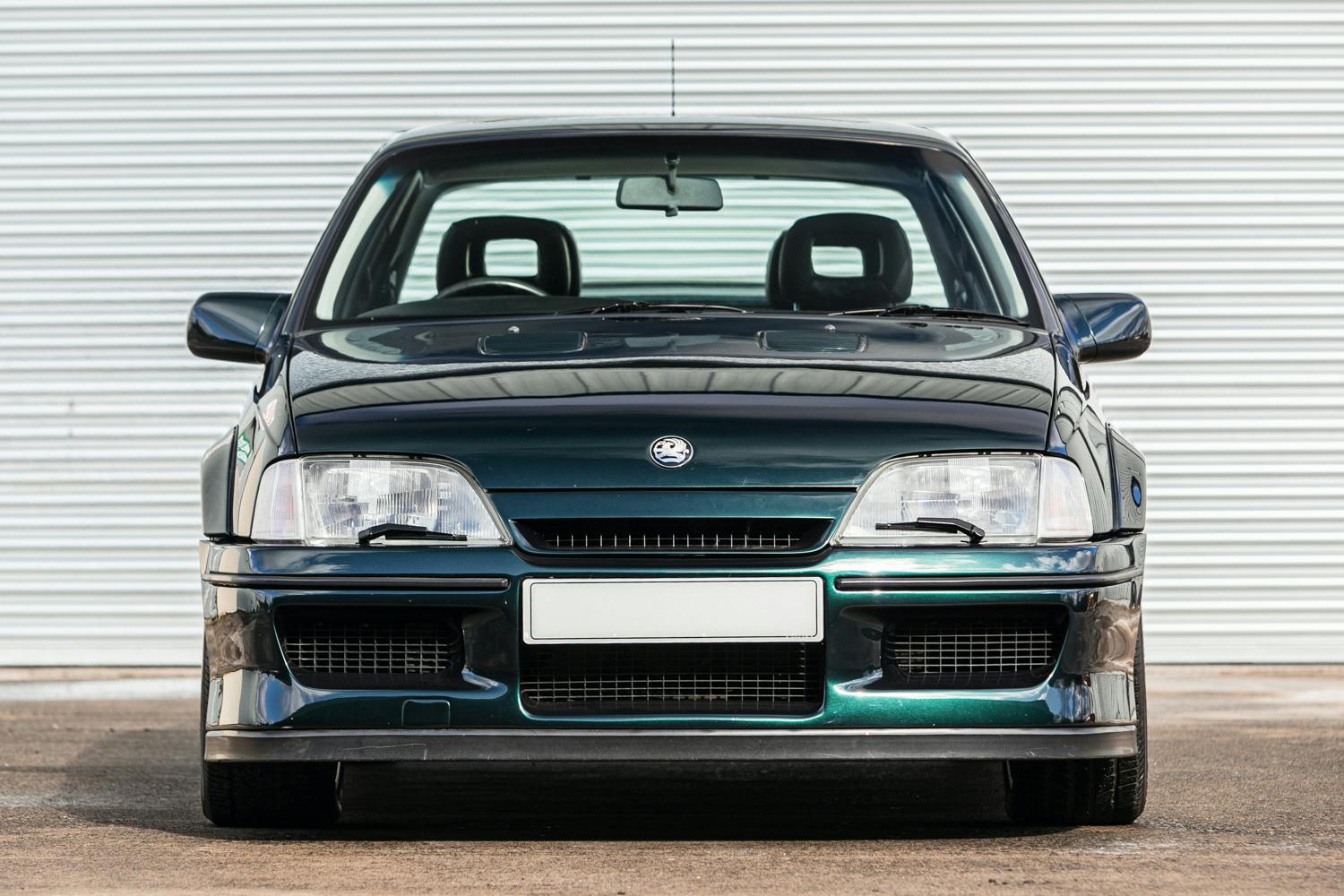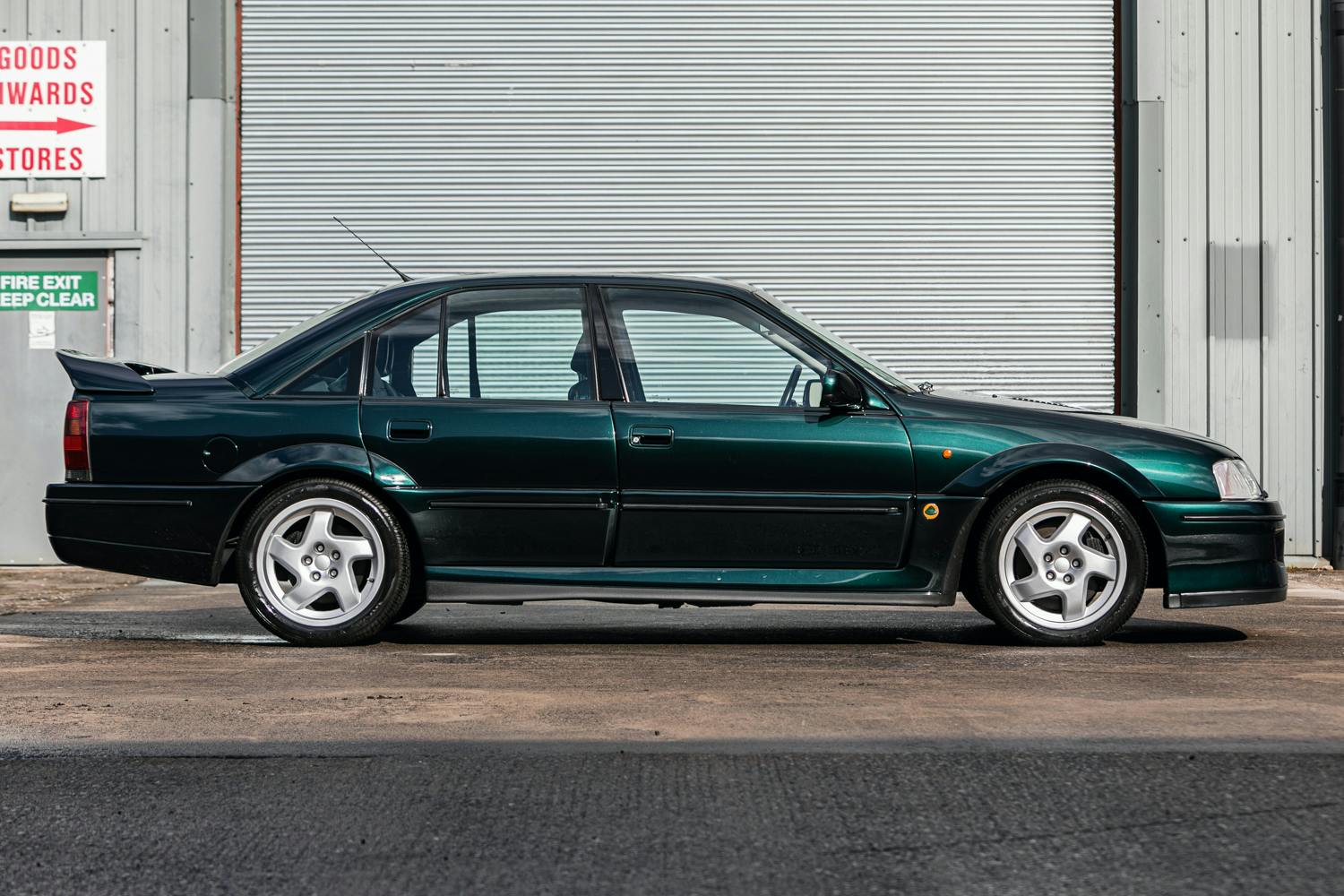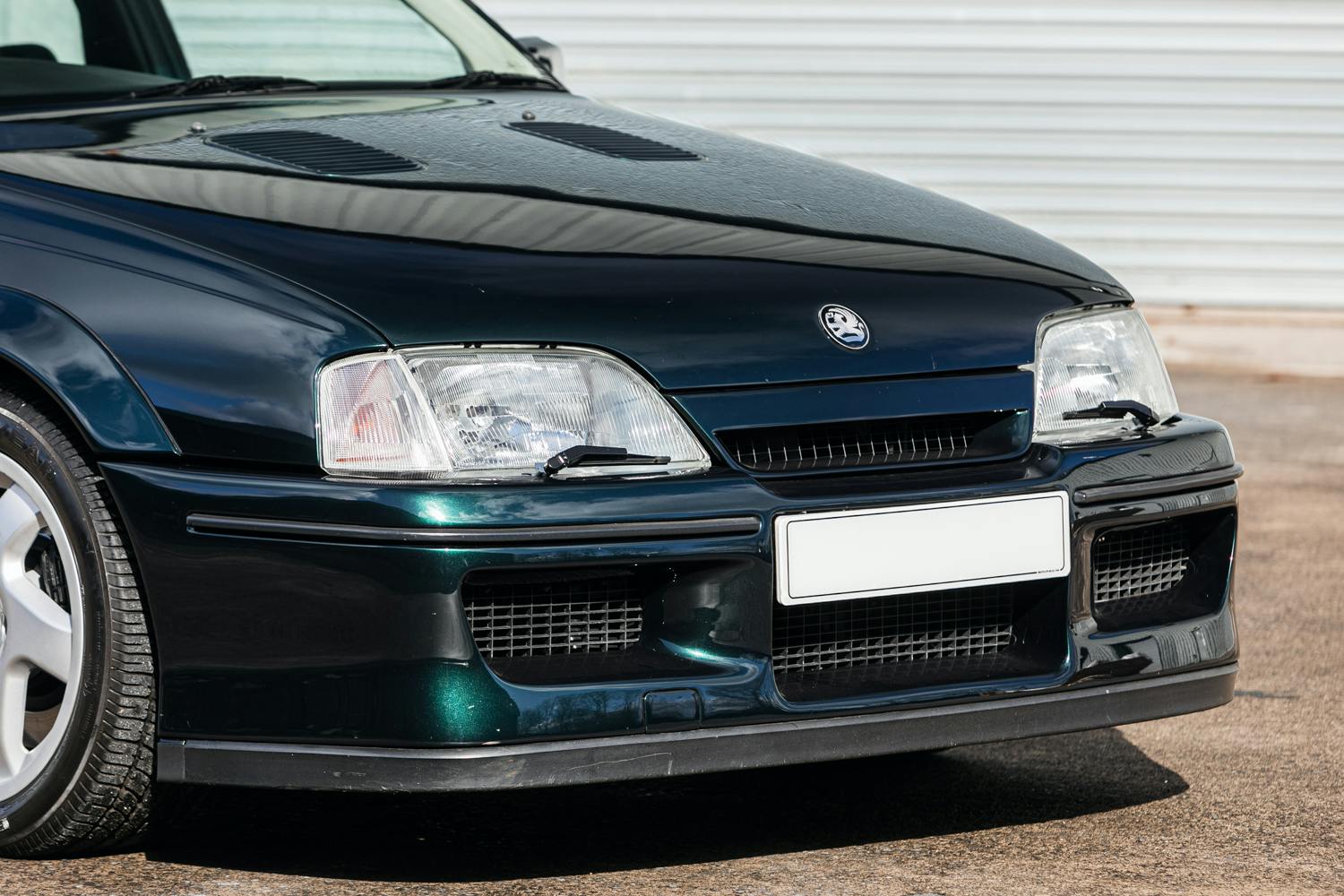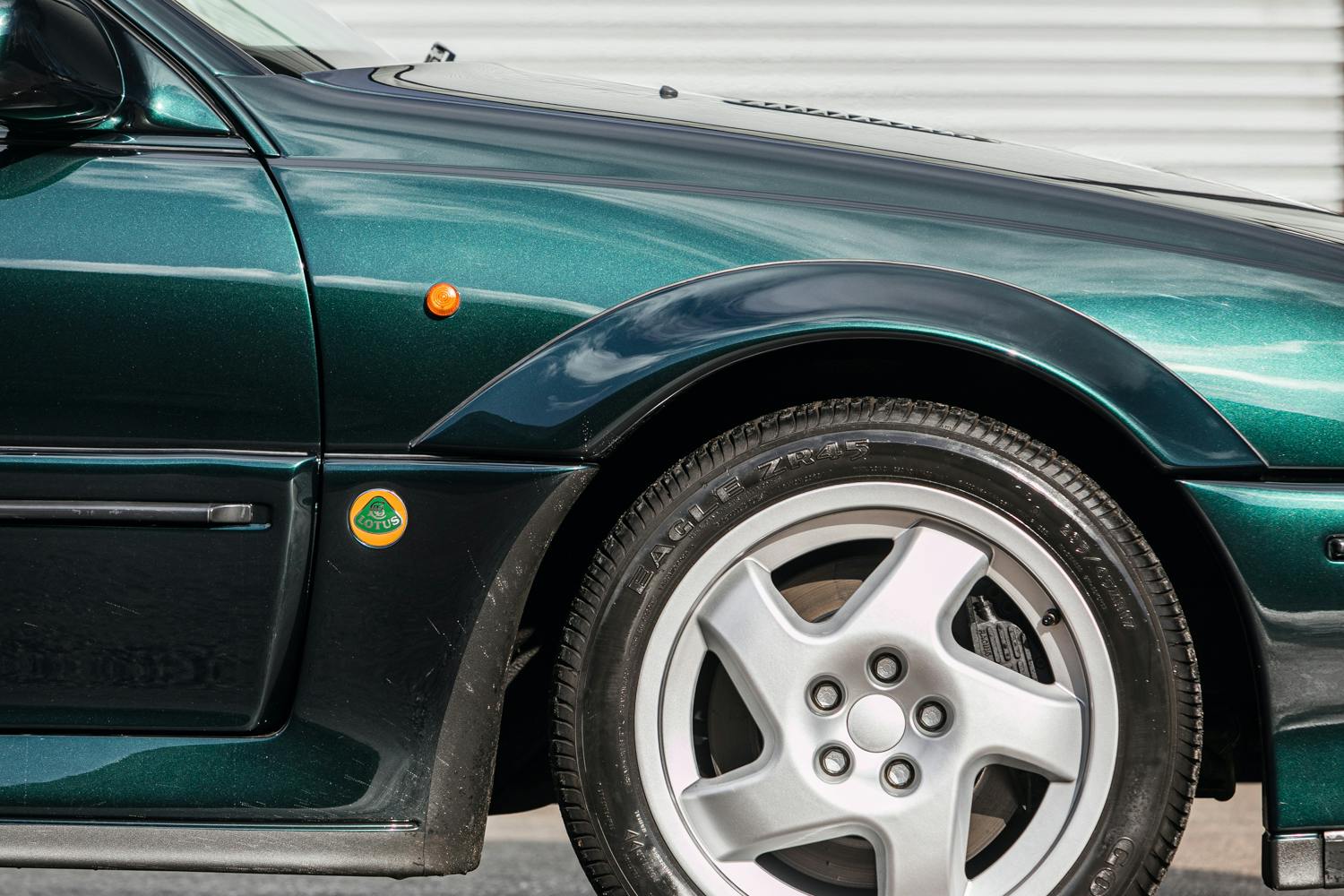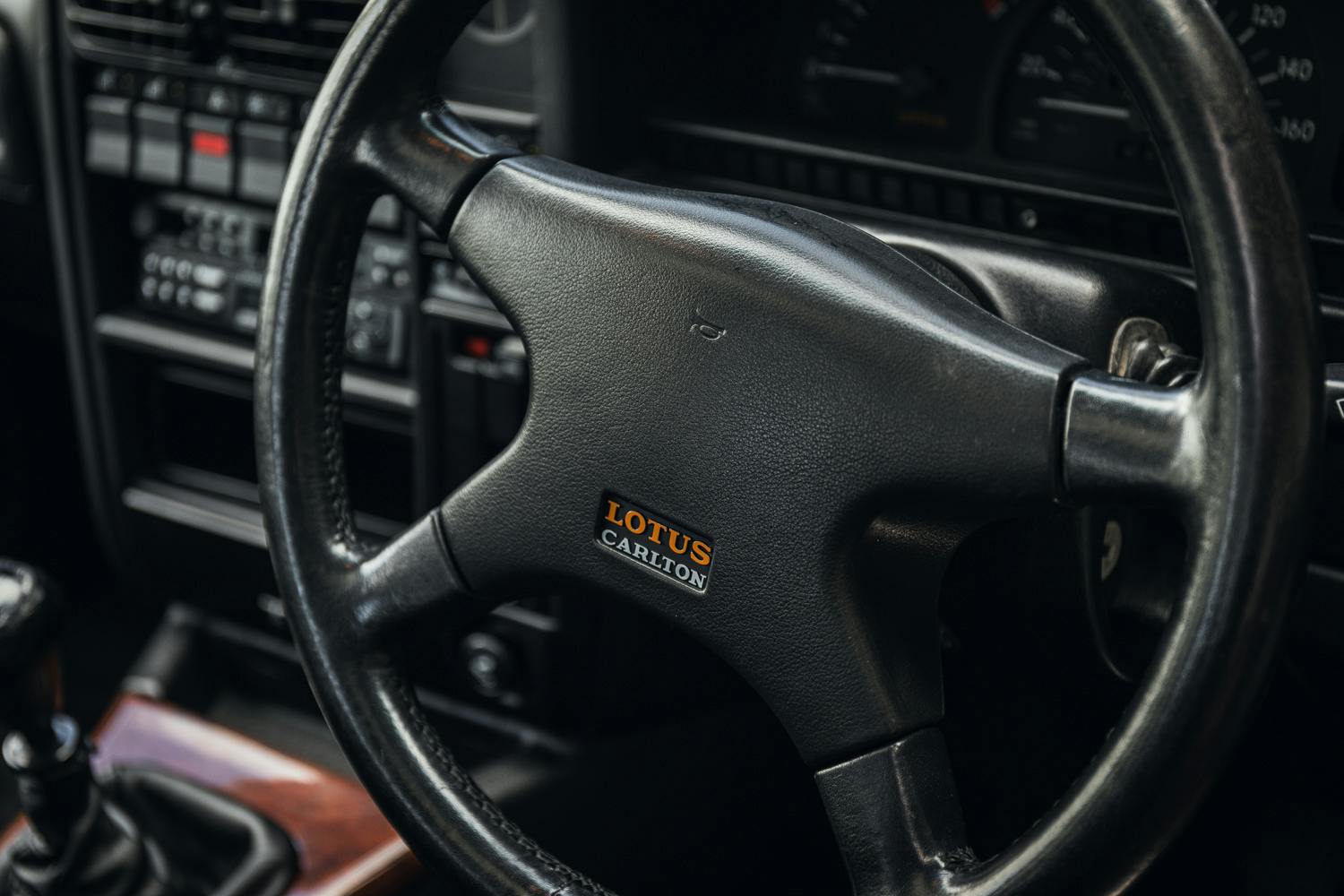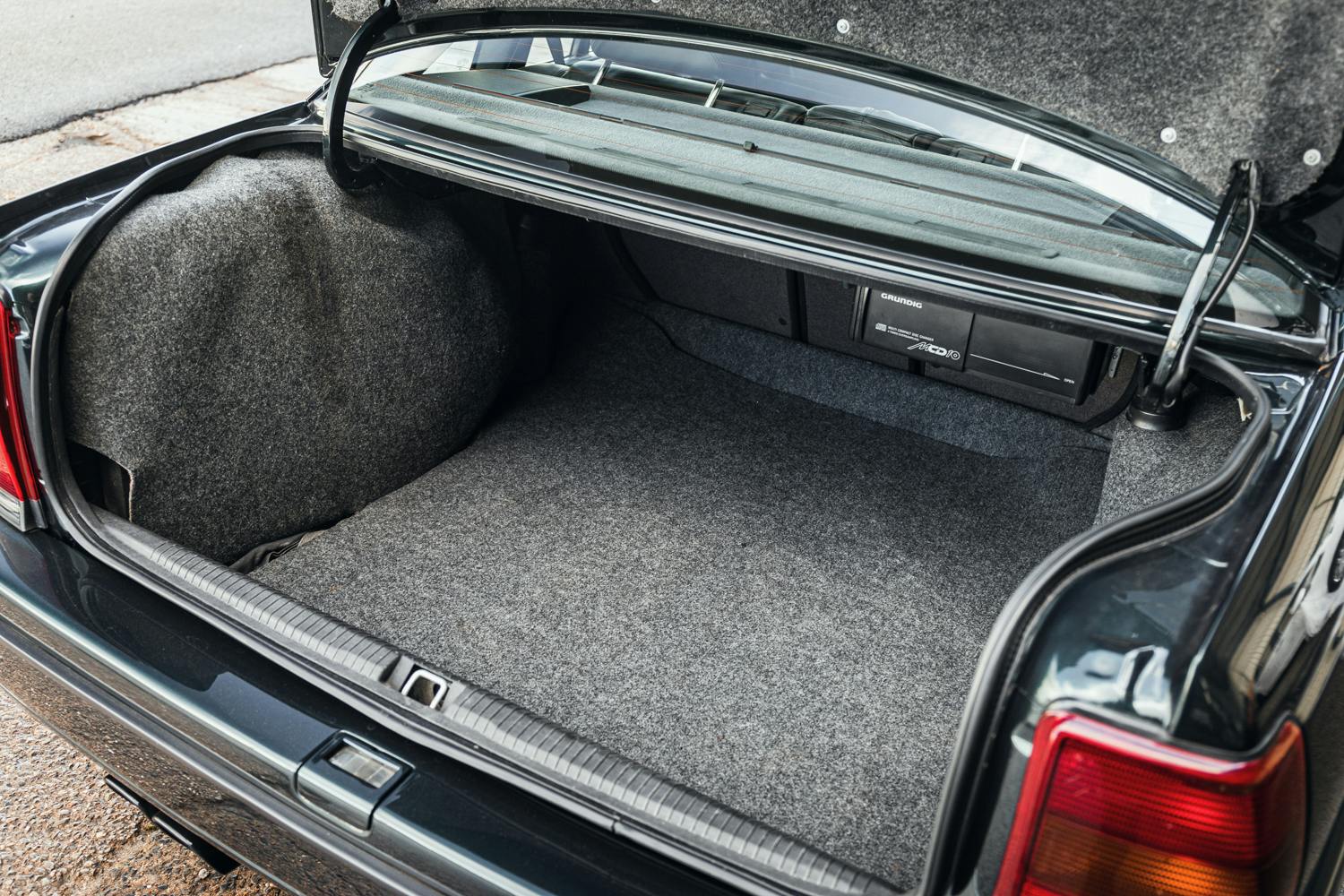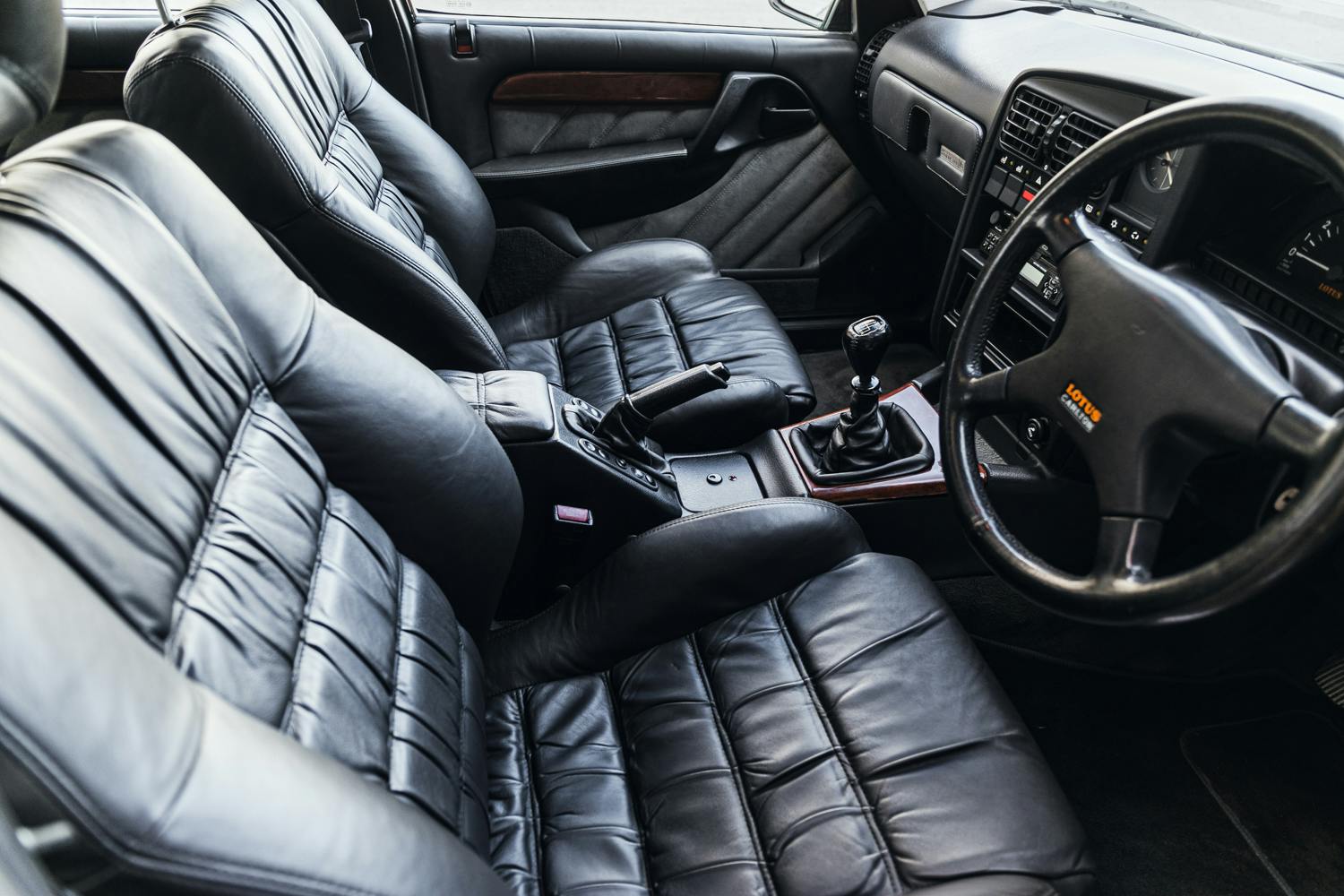The Vauxhall Lotus Carlton is one of the all-time great sleepers
Lotus built its reputation on the “simplify, then add lightness” philosophy. Nevertheless, one of the coolest Lotuses is a big, heavy commuter four-door with wood trim and air conditioning. Infamous for its speed but subtle in its styling, the U.K.’s Vauxhall Lotus Carlton (sold as the Opel Lotus Omega elsewhere Europe) could blow the doors off any other sports sedan in its day, embarrassing even some Porsches and Ferraris. To the casual observer it looks like little more than a luxury sedan with a spoiler and some alloy wheels. It was so fast that some people wanted it outlawed, a suggestion that was debated in Parliament.
The Carlton is one of the all-time great sleepers, but with just 950 built from 1990–92, examples are not easy to find. That’s why the 1992 model up for grabs at Silverstone Auctions’ May 23 online auction caught our eye. The sale contains several high-dollar Astons, 911s, and even a Peugeot 205 T16 rally car, but this dark green Vauxhall is a clear standout.

In the late 1980s, General Motors’ two main European operations—Vauxhall in the U.K. and Opel in Germany—needed some spice to liven up their bland model ranges. It just so happened that GM also owned Lotus (from 1986–93), so the General turned the performance wizards at Lotus loose on the solid, but somewhat boring, Opel Omega executive sedan platform. The resulting Vauxhall Lotus Carlton, called the Type 104 in Lotus-speak, was for several years the world’s fastest four-door automobile.
The process of turning a plain-old Omega/Carlton into a super sedan was not simple. Running and driving Omega/Carltons rolled off a dedicated line at Opel’s plant in Russelheim, Germany, then went to Lotus in Hethel at the old English engineering center used for the DeLorean. Lotus then had to remove the engine and gearbox and widen the transmission tunnel for the new gearbox, not to mention trim the interior with new seats, cut into the shell to fit the body kit, and more.
Lotus took the 3.0-liter 24-valve straight-six from the Carlton GSi, enlarged it to 3.6 liters, and added a new intake and exhaust, Mahle pistons, a forged crankshaft, new connecting rods, and two Garrett T25 turbochargers with intercoolers. This resulted in 377 hp (nearly 200 horses more than a standard 3.0-liter Carlton) and 419 lb-ft of torque. To handle the extra grunt, Lotus dropped in a six-speed manual gearbox from the original Corvette ZR-1 (which, by the way, had a Lotus-designed DOHC engine). Although Lotus experimented with four-wheel drive during testing, all production units were rear-wheel-drive.
Even with 3600 pounds of heft, this was still a Lotus, so the suspension was considerably upgraded. Lotus redesigned the front struts and adden an extra link to the semi-trailing arm on each side, as well as self-leveling dampers in the rear. The Carlton also got vented AP disc brakes, measuring a massive 13 inches up front, behind 17-inch Ronal alloy wheels that are wider in the rear. Traction control was never fitted.
All production Lotus Carltons/Omegas feature Anthracite Connolly leather seats and Imperial Green Metallic paint, which looks black unless you look very closely or the car is under certain light. Each Carlton took about 150 hours to complete and production settled at a rate of about 13 Carlton/Omegas per week as Lotus targeted a production goal of 1100.
The 1990 Lotus Carlton cost £48,000 new, which was a whole lot of money in 1990. (The recession in the early 1990s didn’t help.) It was hard for people to justify paying more for a car with a Vauxhall badge than they would for a BMW M5. Then again, the Lotus was way quicker than the Bimmer. The M5 came with “just” 311 hp and 266 lb-ft of torque and it weighed more. While German OEMs were limiting their sedans’ top speed to 155 mph, Lotus quoted the Carlton/Omega’s top speed at 176 mph. A 1991 Porsche 964 Turbo topped out at 168.
Then, some controversy. Road safety campaigners expressed concerns over a “family car” being able to hit the kinds of speeds typically reserved for exotic six-figure supercars. In 1990, the House of Commons even briefly debated such a vehicle’s morality and right to existence. GM stopped advertising the car’s top speed, but little else came of the squabble other than some bad PR.
Lotus completed only 950 examples of the Omega/Carlton from 1990-92, with less than half of those staying in the U.K. as right-hand drive models. Most sold in Europe as Lotus Omegas. But despite the low sales figures, the Carlton developed a reputation and, like the Ford Sierra Cosworth we wrote about a few weeks ago, was such a favorite among car thieves that insurance premiums for Carltons in the ‘90s were astronomical. One group of thieves reportedly terrorized the West Midlands in the early 1990s, stealing thousands of pounds worth of liquor and cigarettes. They regularly escaped police pursuit in a Lotus wearing registration number “40RA.” Legend has it they even outran a police helicopter.
Now that 30 years have passed, and given the car’s notoriety, it’s only natural that Lotus Carltons/Omegas have become collectible. Over the past few years, several particularly clean Carltons have sold for big money. The most expensive of them was a £78,750 car sold by Silverstone Auctions two years ago. Silverstone also has the Carlton you see here, scheduled to sell at the company’s May Live online auction. Well maintained but showing 99,392 miles, it carries a much more modest estimate of £28,000–£32,000 (about $34,900–$39,800). This would be a fantastic car to buy and import to the U.S. under the 25-year rule.
